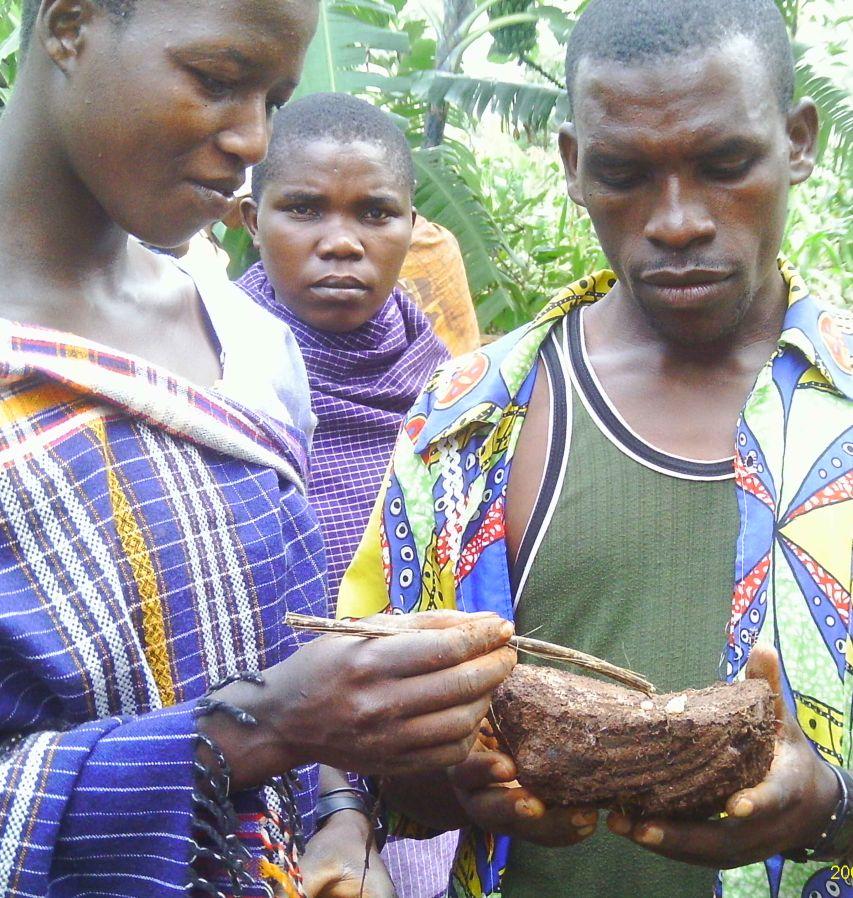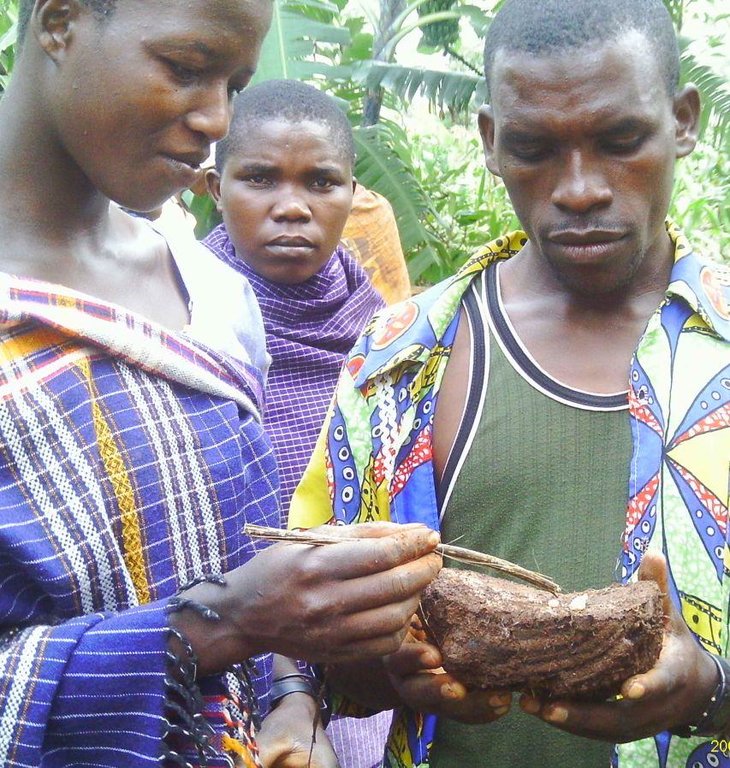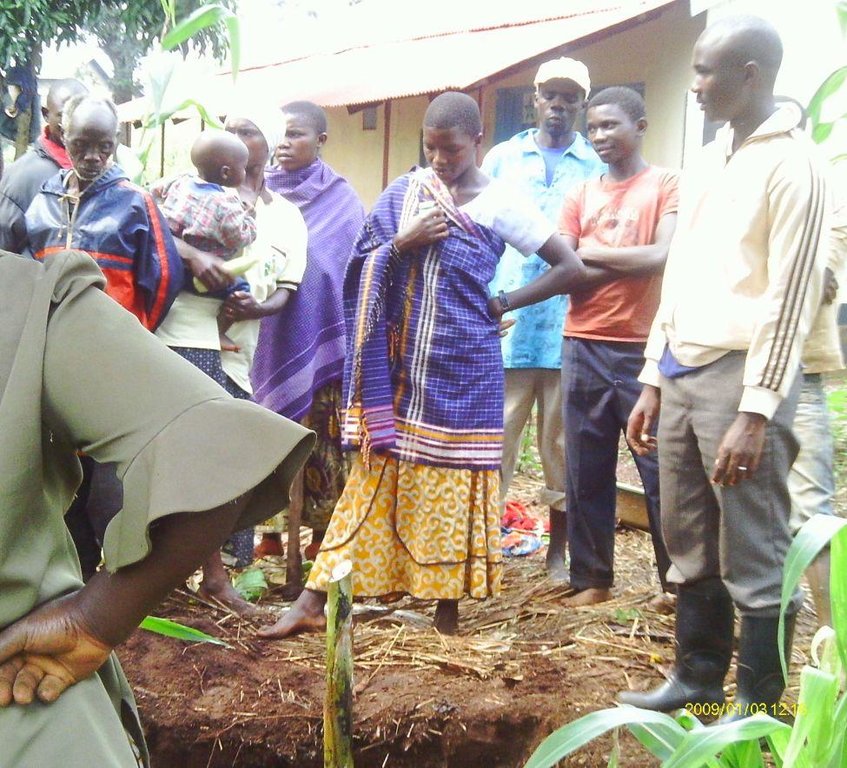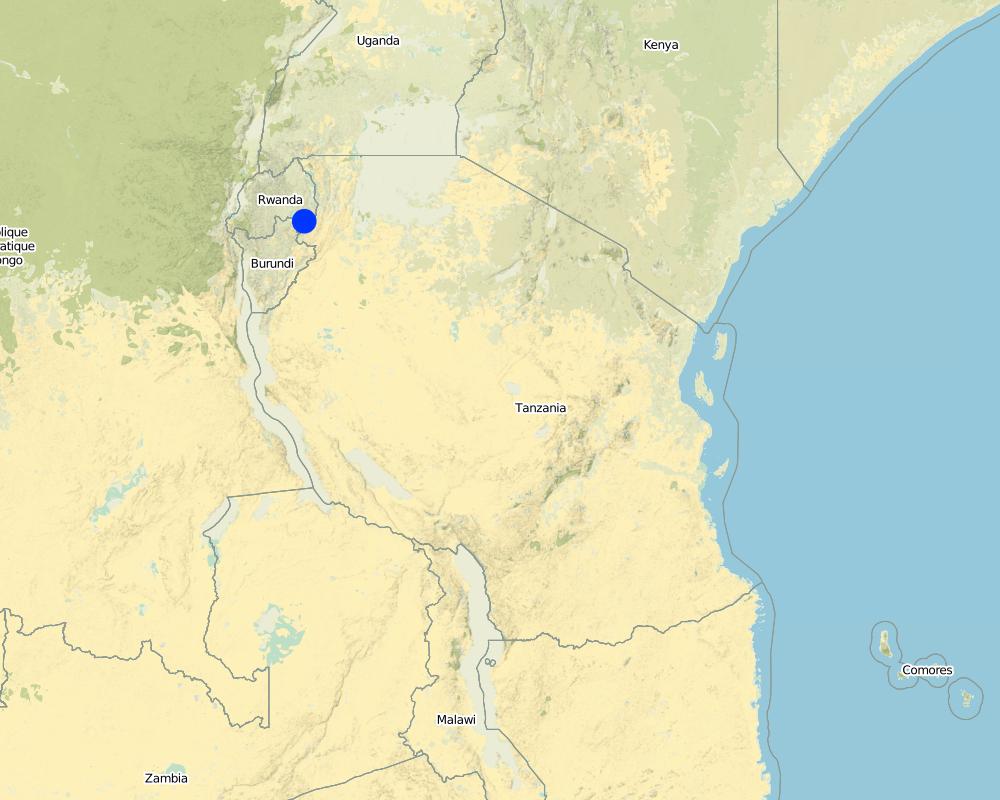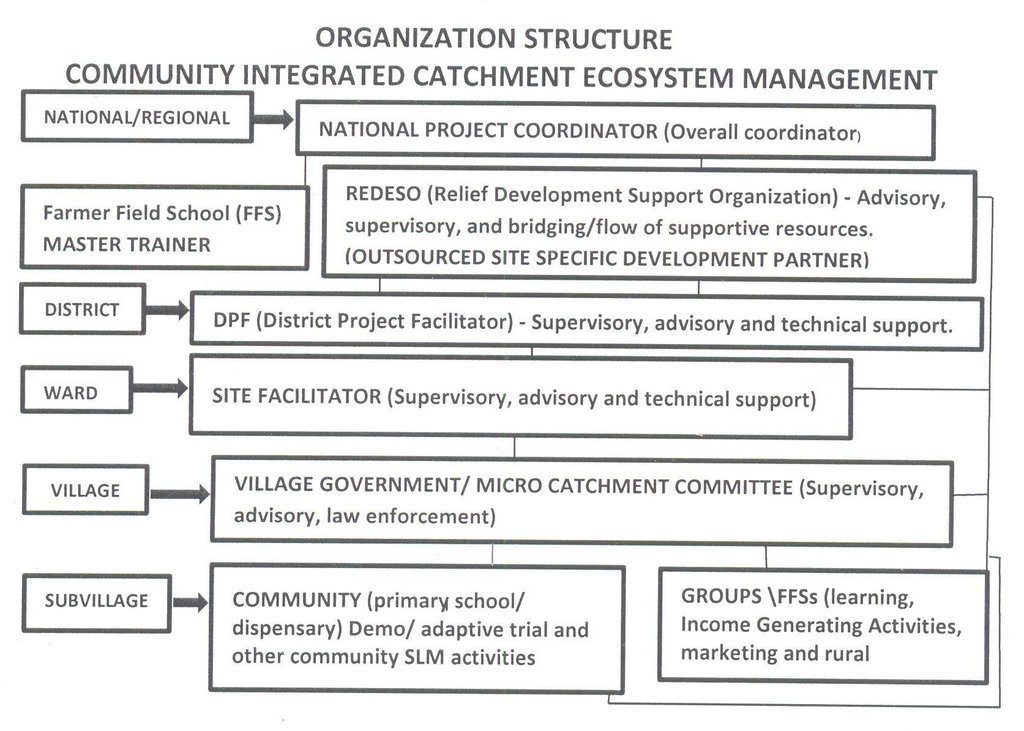Community intergrated catchment ecosystem management [ຕານຊາເນຍ]
- ການສ້າງ:
- ປັບປູງ:
- ຜູ້ສັງລວມຂໍ້ມູນ: ALLAN BUBELWA
- ບັນນາທິການ: –
- ຜູ້ທົບທວນຄືນ: Fabian Ottiger
Mfumo wa usimamizi wa ekolojia katika eneo bonde (Swahili)
approaches_2486 - ຕານຊາເນຍ
ເບິ່ງພາກສ່ວນ
ຂະຫຍາຍທັງໝົດ ຍຸບທັງໝົດ1. ຂໍ້ມູນທົ່ວໄປ
1.2 ລາຍລະອຽດ ການຕິດຕໍ່ ຂອງບຸກຄົນທີ່ຊັບພະຍາກອນ ແລະ ສະຖາບັນ ການມີສ່ວນຮ່ວມ ໃນການປະເມີນຜົນ ແລະ ເອກະສານ ຂອງວິທີທາງ
ຜູ້ຊ່ຽວຊານ ດ້ານການຄຸ້ມຄອງ ທີ່ດິນແບບຍືນຍົງ:
ຜູ້ຊ່ຽວຊານ ດ້ານການຄຸ້ມຄອງ ທີ່ດິນແບບຍືນຍົງ:
ຜູ້ຊ່ຽວຊານ ດ້ານການຄຸ້ມຄອງ ທີ່ດິນແບບຍືນຍົງ:
Mwasikundima Idephonce
Ngara District Council
ຕານຊາເນຍ
ຊື່ຂອງ ສະຖາບັນການຈັດຕັ້ງ ທີ່ອໍານວຍຄວາມສະດວກ ໃນການສ້າງເອກກະສານ ຫຼື ປະເມີນແນວທາງ (ຖ້າກ່ຽວຂ້ອງ)
Bukoba district council (Bukoba district council) - ຕານຊາເນຍຊື່ຂອງ ສະຖາບັນການຈັດຕັ້ງ ທີ່ອໍານວຍຄວາມສະດວກ ໃນການສ້າງເອກກະສານ ຫຼື ປະເມີນແນວທາງ (ຖ້າກ່ຽວຂ້ອງ)
Ngara District Council (Ngara District Council) - ຕານຊາເນຍ1.3 ເງື່ອນໄຂ ຂອງການນໍາໃຊ້ເອກກະສານຂໍ້ມູນ ຂອງ WOCAT
ເມື່ອໃດທີ່ໄດ້ສັງລວມຂໍ້ມູນ (ຢູ່ພາກສະໜາມ)?
10/03/2014
ຜູ້ສັງລວມ ແລະ ບັນດາຜູ້ຕອບແບບສອບຖາມ ຍອມຮັບໃນເງື່ອນໄຂ ການນໍາໃຊ້ຂໍ້ມູນເອກະສານ ທີ່ສ້າງຂື້ນ ໂດຍຜ່ານ ອົງການ WOCAT:
ແມ່ນ
1.4 ເອກະສານອ້າງອີງ (ຫຼາຍ) ກັບແບບສອບຖາມ (ຫຼາຍ) ເຕັກໂນໂລຢີ ຂອງດ້ານການຄຸ້ມຄອງ ດິນແບບຍືນຍົງ
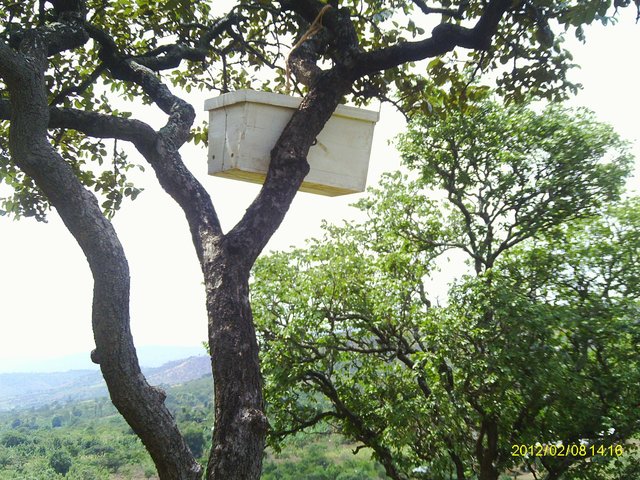
Natural forest conservation using apiaries [ຕານຊາເນຍ]
Establishment of apiaries in natural forests to retard forest mismanagement and improve honey production
- ຜູ້ສັງລວມຂໍ້ມູນ: Philip Ileta
2. ພັນລະນາ ແນວທາງການຄຸ້ມຄອງນໍາໃຊ້ດິນແບບຍືນຍົງ
2.1 ການອະທິບາຍ ໂດຍຫຍໍ້ ຂອງວິທີທາງ
Adaptive Agro-ecosystem Micro-catchment Approach.
2.2 ການອະທິບາຍ ລາຍລະອຽດ ຂອງວິທີທາງ
ການອະທິບາຍ ລາຍລະອຽດ ຂອງວິທີທາງ:
Aims / objectives: SLM knowledge skill generation and capacity building. Improved group and community strength, sustainability, organization and their capacity to benefit and invest in SLM. Motivation of community participation in SLM through use of quick win project, income generating activities, rural micro finance institutions, marketing and active engagement of disadvantaged groups.
Methods: Wider promotion of basket of choice of SLM technologies through SLM Farmer Field School, Demonstration plots and community related activities. Make use and build on already existing and new groups, existing institutions and the community as a whole. Strategic use of easily available and accessible available community institutions/ infrastructures (school and dispensaries sites) to demonstrate and promote basket of choice of SLM technologies. Learning by doing on the job, practical training, adoption and adaptation to local reality.
Stages of implementation: Site characterization through land degradation analysis (LADA) and development of community site specific SLM plan exemplifying SLM interventions needed to address the identified degradation types. Set up and identification of approaches needed to execute identified interventions complementary approaches. Sensitization and awareness creation to the community and actual execution of approaches.
Role of stakeholders: Individual groups: are core implementers and potential beneficiaries of the project.
Extension worker: Advisory and technical backstopping.
Elected and employed leaders at the sub-village, village and ward level: bylaw/law enforcement, supervisory and land provision.
Relief for Development Societies NGO (REDESO): Service provision and development partner in SLM.
Trans boundary Agro-ecosystem Management Project (TAMP): Provision of supportive resources (financial and technical).
Ngara district council: Supervisory, technical, policy interpretation, monitoring and evaluation, documentation, analysis and shairing .
Rugenge/Kirusha Micro catchment Committee: Supervisory, advisory and law enforcement.
2.3 ຮູບພາບຂອງແນວທາງ
2.5 ປະເທດ / ເຂດ / ສະຖານທີ່ບ່ອນທີ່ແນວທາງໄດ້ຖືກນໍາໃຊ້
ປະເທດ:
ຕານຊາເນຍ
ພາກພື້ນ / ລັດ / ແຂວງ:
Tanzania
ຂໍ້ມູນເພີ່ມເຕີມຂອງສະຖານທີ່:
Ngara
Map
×2.6 ວັນທີເລີ່ມຕົ້ນ ແລະ ສິ້ນສຸດ ການຈັດຕັ້ງປະຕີບັດ ວິທີທາງ
ສະແດງປີຂອງການເລີ່ມຕົ້ນ:
2010
ປີທີ່ສີ້ນສູດ (ຖ້າຢຸດບໍ່ໄດ້ນໍາໃຊ້ ວິທີທາງ):
2014
2.7 ປະເພດຂອງແນວທາງ
- ພາຍໃຕ້ໂຄງການ / ແຜນງານ
2.8 ເປົ້າໝາຍ / ຈຸດປະສົງຫຼັກ ຂອງການຈັດຕັ້ງປະຕິບັດ ວິທີທາງ
The Approach focused mainly on SLM with other activities (Motivating quick win income generation activities, rural microfinance institutions, marketing and HIV/AIDS controll.)
Knowledge/skill generation, demonstration and sustainability of SLM activities.
Motivate active participation of the community.
Inculcate a sense of community ownership/ community take charge of SLM activities.
The SLM Approach addressed the following problems: Lack of technical knowledge
Low investment capacity
Malpractice and mismanagement of local resources (e.g. fire burning, ploughing along the slope).
Adequate supervision, monitoring and law enforcement.
2.9 ເງື່ອນໄຂອໍານວຍ ຫຼື ຂັດຂວາງການປະຕິບັດຂອງເຕັກໂນໂລຢີ / ເຕັກໂນໂລຢີການນໍາໃຊ້ຕາມແນວທາງ
ສັງຄົມ / ວັດທະນະທໍາ / ມາດຕະຖານ ແລະ ຄຸນຄ່າທາງສາສະໜາ
- ເຊື່ອງຊ້ອນ
Negative cultural believes that fire burning can lead to one living long or reach older age.
Treatment through the SLM Approach: Change of mind set through FFS training, demos and community sensitization.
ມີຄວາມສາມາດ / ເຂັ້າເຖິງຊັບພະຍາກອນດ້ານການເງິນ ແລະ ການບໍລິການ
- ເຊື່ອງຊ້ອນ
Low investment capacity and inability to access supportive resources
Treatment through the SLM Approach: Easy access to TAMP supportive resources.
ການກໍ່ຕັ້ງສະຖາບັນ
- ເຊື່ອງຊ້ອນ
Narrow coverage of the district, local institutions not involved in in SLM.
Treatment through the SLM Approach: Higher coverage, ope-rationalization of SLM in LGA system.
ກ່ຽວກັບກົດໝາຍ (ສິດນໍາໃຊ້ດິນ, ສິດນໍາໃຊ້ນໍ້າ)
- ອໍານວຍ
The existing land ownership, land use rights / water rights helped a little the approach implementation: Hindrance is usually observant for approaches which need long term commitment of land resources (e.g perennial crops) but is minimal for short term (annuals and biannual).
Open access land resources are difficult to manage.
- ເຊື່ອງຊ້ອນ
Reluctance of the village to issue land, less protection of open access land resources.
Treatment through the SLM Approach: land issuing for FFS/Demo use legally recognized through signing of Memorandum Of Understanding (MOU) between the village and land users/SLM groups. Bylaws reinforcement to protect mismanagement of open access land resources.
ຄວາມຮູ້ກ່ຽວກັບການຄຸ້ມຄອງ ທີ່ດິນແບບຍືນຍົງ, ການເຂົ້າເຖິງການສະໜັບສະໜູນ ທາງດ້ານວິຊາການ
- ເຊື່ອງຊ້ອນ
Inadequate understanding and use of SLM technical knowledge (both scientific and indigenous) to address land degradation problems.
Treatment through the SLM Approach: Up scaling use of scientific SLM knowledge.
Documentation, evaluation, analysis and sharing of successful indigenous SLM technical knowledge.
ວຽກ, ມີກໍາລັງຄົນ
- ເຊື່ອງຊ້ອນ
High workload to extension officers (due to their shortage).
Treatment through the SLM Approach: Build a local resource base in facilitating SLM activities through introduction of community SLM facilitators and Micro-catchment committee.
ອື່ນໆ
- ເຊື່ອງຊ້ອນ
Low motivation due to long term realization of SLM benefits.
Treatment through the SLM Approach: introduce SLM related quick win projects and income generation activities (IGA).
3. ການມີສ່ວນຮ່ວມ ແລະ ບົດບາດຂອງພາກສ່ວນທີ່ກ່ຽວຂ້ອງທີ່ໄດ້ມີສ່ວນຮ່ວມ
3.1 ຜູ້ມີສ່ວນຮ່ວມ ໃນວິທີທາງ ແລະ ພາລະບົດບາດ ຂອງເຂົາເຈົ້າ
- ຜູ້ນໍາໃຊ້ດິນໃນທ້ອງຖິ່ນ / ຊຸມຊົນທ້ອງຖິ່ນ
Core implementors. all gender, youth and elders . Widows, Orphans, People living with HIV/AIDS were actively indiscriminately involved in FFS, Demos and community related activities..
- ຜູ້ຊ່ຽວຊານ ການນຄຸ້ມຄອງ ທີ່ດິນແບບຍືນຍົງ / ທີ່ປຶກສາດ້ານກະສິກໍາ
all gender, youth and elders
- ຄູອາຈານ / ນັກຮຽນ / ນັກສຶກສາ
all gender, youth and elders
- ອົງການຈັດຕັ້ງ ທີ່ບໍ່ຂື້ນກັບລັດຖະບານ
dvisory, technical back stopping, supervisory and monitoring.
- ອໍານາດ ການປົກຄອງທ້ອງຖິ່ນ
Advisory, technical back stopping, supervisory and monitoring.
- ພະນັກງານຂັ້ນສູນກາງ (ຜູ້ວາງແຜນ, ຜູ້ສ້າງນະໂຍບາຍ)
dvisory, technical back stopping, supervisory and monitoring.
- ອົງການຈັດຕັ້ງ ສາກົນ
dvisory, supervisory and monitoring.
ຖ້າຫາກມີຫຼາຍພາກສ່ວນທີ່ເຂົ້າຮ່ວມ ໃຫ້ລະບຸ ອົງການທີ່ເປັນຫຼັກ ໃນການຈັດຕັ້ງປະຕິບັດ:
Land user (all genders, youth and elders): consulted and made informed decision about the approach to be used. National specialists: potential facilitators in designing and community sensitization. International specialists: consultative and subject matter specialist (e.g. FFS specialist)
3.2 ການມີສ່ວນຮ່ວມຂອງຜູ້ນໍາໃຊ້ທີ່ດິນໃນທ້ອງຖິ່ນ / ຊຸມຊົນທ້ອງຖິ່ນໃນໄລຍະທີ່ແຕກຕ່າງກັນຂອງແນວທາງ
| ການລວບລວມ ເອົາຜູ້ນໍາໃຊ້ດິນ ໃນທ້ອງຖິ່ນ / ຊຸມຊົນທ້ອງຖິ່ນ | ໃຫ້ລະບຸ ຜູ້ໃດທີ່ມີສ່ວນຮ່ວມ ໃນແຕ່ລະກິດຈະກໍາ? | |
|---|---|---|
| ການເລີ່ມຕົ້ນ / ແຮງຈູງໃຈ | ການບໍ່ປະຕິບັດ | Community, groups, employed and elected leaders: participated in sensitization and awareness creation process. |
| ການວາງແຜນ | ການຮ່ວມມື | Community, groups, employed and elected leaders: active participants and decision makers in planning e.g. selection of FFS community facilitators and formation of micro-catchment committee. |
| ການປະຕິບັດ | ການຊ່ວຍເຫຼືອຈາກພາຍນອກ | Community, groups, employed and elected leaders: core and key implementers of the approach. |
| ຕິດຕາມກວດກາ / ການປະເມີນຜົນ | ການຮ່ວມມື | Community, groups, employed and elected leaders: self mobilized and client interactive monitoring. |
| Research | ການຮ່ວມມື | Community, groups, employed and elected leaders: site identification and active implementers of adaptive trials (e.g use of fanya juu/chini terraces, vertivar grass e.t.c). Adopters, users and promoters of the best bets technologies. |
3.3 ແຜນວາດ (ຖ້າມີ)
ການອະທິບາຍ:
organization structure of community integrated catchment ecosystem management.
ຜູ້ຂຽນ:
Allan Isaka Bubelwa (Box 38 Kyaka Missenyi Kagera Tanzania)
3.4 ການຕັດສິນໃຈກ່ຽວກັບການຄັດເລືອກເຕັກໂນໂລຢີຂອງການຄຸ້ມຄອງທີ່ດິນແບບຍືນຍົງ / ເຕັກໂນໂລຢີ
ລະບຸ ຄົນທີ່ຕັດສິນໃຈ ກ່ຽວກັບການຄັດເລືອກຂອງ ເຕັກໂນໂລຢີ / ເຕັກໂນໂລຢີ ຈະໄດ້ຮັບການປະຕິບັດ:
- ຜູ້ນໍາໃຊ້ທີ່ດິນຫຼັກ, ການສະໜັບສະໜູນ ໂດຍຜູ້ຊ່ຽວຊານ ການນໍາໃຊ້ທີ່ດິນແບບຍືນຍົງ
ອະທິບາຍ:
Land users working in collaboration with SLM specialist through a participatory dialogue and decision making process.
Decisions on the method of implementing the SLM Technology were made by mainly by land users supported by SLM specialists. During inception of the project, land users were actively involved in deciding on the type of method to adopt e.g. selection of site and test crops for FFS, Demo and community related SLM activities.
4. ການສະໜັບສະໜູນທາງດ້ານວິຊາການ, ການສ້າງຄວາມສາມາດ, ແລະ ການຈັດການຄວາມຮູ້.
4.1 ການສ້າງຄວາມສາມາດ / ການຝຶກອົບຮົມ
ຜູ້ນໍາໃຊ້ທີ່ດິນ ຫຼື ພາກສ່ວນກ່ຽວຂ້ອງອື່ນໆ ໄດ້ຮັບການຝຶກອົບຮົມບໍ່?
ແມ່ນ
ໃຫ້ລະບຸ ຜູ້ໃດທີ່ໄດ້ຮັບການຝຶກອົບຮົມ:
- ຜູ້ນໍາໃຊ້ດິນ
- ພະນັກງານພາກສະໜາມ / ທີ່ປຶກສາ
- employed and elected leaders
ຖ້າເປັນໄປໄດ້, ໃຫ້ລະບຸເພດ, ອາຍຸ, ສະຖານະພາບ, ຊົນເຜົ່າ, ແລະ ອື່ນໆ:
Both gender, all age (youth and elders)
ຮູບແບບຂອງການຝຶກອົບຮົມ:
- ການເຮັດຕົວຈິງ
- ຕົວຕໍ່ຕົວ
- ເນື້ອທີ່ສວນທົດລອງ
ໃນຫົວຂໍ້:
SLM related subjects
4.2 ການບໍລິການໃຫ້ຄໍາປຶກສາ
ເຮັດຜູ້ໃຊ້ທີ່ດິນມີການເຂົ້າເຖິງການບໍລິການໃຫ້ຄໍາປຶກສາ?
ແມ່ນ
ລະບຸວ່າການສະໜອງ ການບໍລິການ ໃຫ້ຄໍາປຶກສາ:
- ໃນພື້ນທີ່ຂອງຜູ້ນໍາໃຊ້ດິນ
ອະທິບາຍ / ຄວາມຄິດເຫັນ:
Name of method used for advisory service: Farmer field schools (FFS); Key elements: Practical training and learning by doing., Basket of choice of Technologies/Demos., Group oriented and site specific; Adoption depends on farmers choice and ability to invest.
Advisory service is inadequate to ensure the continuation of land conservation activities; There is limited knowledge and low funding capacity.
4.3 ສະຖາບັນການສ້າງຄວາມເຂັ້ມແຂງ (ການພັດທະນາອົງການຈັດຕັ້ງ)
ສະຖາບັນ ໄດ້ຮັບການສ້າງຕັ້ງຂື້ນ ຫຼື ໄດ້ຮັບການສ້າງຄວາມເຂັ້ມແຂງ ໂດຍການຈັດຕັ້ງປະຕິບັດ ວິທີທາງບໍ່?
- ມີ, ພໍສົມຄວນ
ລະບຸ ທາງສະຖາບັນ ໄດ້ສ້າງຄວາມເຂັ້ມແຂງ ໃນລະດັບໃດ (ຫຼາຍ):
- ທ້ອງຖິ່ນ
ລະບຸ ປະເພດ ຂອງສະໜັບສະໜູນ:
- ການສ້າງຄວາມອາດສາມາດ / ການຝຶກອົບຮົມ
ໃຫ້ລາຍລະອຽດເພີ່ມເຕີມ:
Training provision to micro-catchment committee.
4.4 ຕິດຕາມກວດກາ ແລະ ປະເມີນຜົນ
ການຈັດຕັ້ງປະຕິບັດ ວິທີທາງ ໄດ້ມີການປະເມີນຜົນ ແລະ ຕິດຕາມບໍ?
ແມ່ນ
ຄວາມຄິດເຫັນ:
bio-physical aspects were ad hoc monitored by project staff, government, land users through observations; indicators: hactarage conserved
bio-physical aspects were ad hoc monitored by project staff, government, land users through measurements; indicators: hactarage conserved
technical aspects were regular monitored by project staff, government, land users through observations; indicators: number of adopters
technical aspects were regular monitored by project staff, government, land users through measurements; indicators: number of adopters
socio-cultural aspects were regular monitored by project staff, government, land users through observations; indicators: % involvement of women
socio-cultural aspects were regular monitored by project staff, government, land users through measurements; indicators: % involvement of women
economic / production aspects were regular monitored by project staff, government, land users through observations; indicators: % increase in yield and income
economic / production aspects were regular monitored by project staff, government, land users through measurements; indicators: % increase in yield and income
area treated aspects were regular monitored by project staff, government, land users through observations; indicators: hactarage conserved
area treated aspects were regular monitored by project staff, government, land users through measurements; indicators: hactarage conserved
no. of land users involved aspects were regular monitored by project staff, government, land users through observations; indicators: number of adopters
no. of land users involved aspects were regular monitored by project staff, government, land users through measurements; indicators: number of adopters
management of Approach aspects were regular monitored by project staff, government, land users through observations; indicators: Number of FFS, Demos and IGA
management of Approach aspects were monitored through measurements; indicators: umber of FFS, Demos and IGA
There were several changes in the Approach as a result of monitoring and evaluation: Introduction of FFS farmer facilitators and Micro-catchment committees.
There were few changes in the Technology as a result of monitoring and evaluation: In the course of implementation adjusting or modifying technologies to suit agro-ecological condition or landforms
4.5 ການຄົ້ນຄວ້າ
ນີ້້ແມ່ນສ່ວນໜຶ່ງ ການຄົ້ນຄວ້າ ຂອງວິທີທາງບໍ່?
ແມ່ນ
- adaptive SLM trials
ໃຫ້ຂໍ້ມູນ ເພີ່ມເຕີມ ແລະ ກໍານົດ ຜູ້ໃດເຮັດການຄົ້ນຄວ້າ:
Adaptive SLM trials run by community/district/ARI Maruku through demos where farmers can select the best bets to apply and try on their own fields.
Research was carried out on-farm
5. ການສະໜັບສະໜູນທາງດ້ານການເງິນ ແລະ ອຸປະກອນຈາກພາຍນອກ
5.1 ງົບປະມານປະຈໍາປີ ສໍາລັບວິທີທາງ ຂອງການຄຸ້ມຄອງ ທີ່ດິນແບບຍືນຍົງ
ຖ້າຫາກບໍ່ຮູ້ຈັດງົບປະມານທີ່ແນ່ນອນ ແມ່ນໃຫ້ປະມານເອົາ:
- 10,000-100,000
ຄໍາເຫັນ (ຕົວຢ່າງ: ແຫຼ່ງຂໍ້ມູນຫຼັກ ຂອງການສະໜອງທຶນ / ຜູ້ໃຫ້ທຶນທີ່ສໍາຄັນ):
Approach costs were met by the following donors: international (TAMP): 50.0%; government (Region/ARI Maruku.): 10.0%; local government (district, county, municipality, village etc) (Ngara district council, Villages and Ward): 20.0%; local community / land user(s) (Local community and groups withi the microcatchment ): 20.0%
5.2 ການສະໜັບສະໜູນ ທາງດ້ານການເງິນ / ອຸປະກອນ ສະໜອງໃຫ້ແກ່ຜູ້ນໍາທີ່ດິນ
ຜູ້ນໍາໃຊ້ດິນ ໄດ້ຮັບການສະໜັບສະໜູນ ທາງດ້ານ ການເງິນ / ອຸປະກອນ ໃນການຈັດຕັ້ງປະຕິບັດ ເຕັກໂນໂລຢີບໍ?
ແມ່ນ
5.3 ເງິນສົມທົບສໍາລັບການນໍາໃຊ້ສະເພາະປັດໃຈຂາເຂົ້າໃນການຜະລີດກະສິກໍາ (ລວມທັງແຮງງານ)
- ອຸປະກອນ
| ໃຫ້ລະບຸໄດ້ຮັບການສະໜັບສະໜູນປັດໃຈຂາເຂົ້າຫຍັງແດ່ | ທີ່ຂອບເຂດ | ລະບຸ ການອຸດໜູນ |
|---|---|---|
| ເຄື່ອງມື | ງົບປະມານເຕັມສ່ວນ | Working gears (gun boots, raincoats, T-shirts) |
| Computers, cameras | ງົບປະມານເຕັມສ່ວນ | |
- ກະສິກໍາ
| ໃຫ້ລະບຸໄດ້ຮັບການສະໜັບສະໜູນປັດໃຈຂາເຂົ້າຫຍັງແດ່ | ທີ່ຂອບເຂດ | ລະບຸ ການອຸດໜູນ |
|---|---|---|
| ແນວພັນ, ແກ່ນພັນ | ງົບປະມານບາງສ່ວນ | |
| ຝຸ່ນ, ປຸ໋ຍ | ງົບປະມານບາງສ່ວນ | |
| Manure | ງົບປະມານບາງສ່ວນ | |
- ອື່ນໆ
| ອື່ນໆ (ລະບຸ) | ທີ່ຂອບເຂດ | ລະບຸ ການອຸດໜູນ |
|---|---|---|
| Livestock | ງົບປະມານເຕັມສ່ວນ | Chicken, goats and bees |
ຖ້າແຮງງານ ຂອງຜູ້ນໍາໃຊ້ດິນ ໄດ້ຮັບການສະໜັບສະໜູນ ປັດໃຈຂາເຂົ້າ, ແມ່ນບໍ່:
- ການອາສາ
ຄວາມຄິດເຫັນ:
labour was largely voluntarily and was rewarded indirectly by introduction of income generating activities.
Some inputs were fully financed, partly financed and not financed. Materials fully financed are those not available at the site or not adequately available or in shortage.
5.4 ສິນເຊື່ອ
ໄດ້ປ່ອຍສິນເຊື່ອ ສະໜອງໃຫ້ພາຍໃຕ້ ວິທີການສໍາລັບກິດຈະກໍາ ການຄຸ້ມຄອງ ທີ່ດິນແບບຍືນນຍົງບໍ່?
ບໍ່ແມ່ນ
6. ວິເຄາະຜົນກະທົບ ແລະ ສັງລວມບັນຫາ
6.1 ຜົນກະທົບຂອງແນວທາງ
ການຈັດຕັ້ງປະຕິບັດ ວິທີທາງ ສາມາດຊ່ວຍຜູ້ນໍາໃຊ້ທີ່ດິນ ໃນການຈັດຕັ້ງປະຕິບັດ ແລະ ບໍາລຸງຮັກສາ ເຕັກໂນໂລຢີ ການຄຸ້ມຄອງ ທີ່ດິນແບບຍືນຍົງໄດ້ບໍ?
- ບໍ່
- ມີ, ໜ້ອຍໜຶ່ງ
- ມີ, ພໍສົມຄວນ
- ມີ, ຫຼາຍ
Knowledge and skill acquired through FFS, Demos and community related intervention played significant role in improvement of SLM. Bylaw reinforcement significantly prevented malpractices/land resource mismanagement.
ການຈັດຕັ້ງປະຕິບັດ ວິທີທາງ ສາມາດສ້າງຄວາມເຂັ້ມແຂງ ທາງສັງຄົມ ແລະ ເສດຖະກິດບໍ່?
- ບໍ່
- ມີ, ໜ້ອຍໜຶ່ງ
- ມີ, ພໍສົມຄວນ
- ມີ, ຫຼາຍ
Improved to livelihood mechanism/alternates to widow, orphan and people living with HIV/AIDS
ການຈັດຕັ້ງປະຕິບັດ ວິທີທາງ ສາມາດປັບປຸງ ປະເດັນການຖືຄອງທີ່ດິນ / ສິດທິໃນການນໍາໃຊ້ທີ່ດິນ ທີ່ເຊື່ອງຊ້ອນໃນການຈັດຕັ້ງປະຕິບັດ ເຕັກໂນໂລຢີ ການຄຸ້ມຄອງ ທີ່ດິນແບບຍືນຍົງໄດ້ບໍ?
- ບໍ່
- ມີ, ໜ້ອຍໜຶ່ງ
- ມີ, ພໍສົມຄວນ
- ມີ, ຫຼາຍ
The approach involve signing of memorandum of understanding (MOU) over use of land resource between farmer groups running Demos and FFS and the village government. MOU is a strong and reliable legal acquisition of land resource to be used for conservation activities.
Did other land users / projects adopt the Approach?
- ບໍ່
- ມີ, ໜ້ອຍໜຶ່ງ
- ມີ, ພໍສົມຄວນ
- ມີ, ຫຼາຍ
On average each FFS member induced adoption to 2 household farmers.
Did the Approach lead to improved livelihoods / human well-being?
- ບໍ່
- ມີ, ໜ້ອຍໜຶ່ງ
- ມີ, ພໍສົມຄວນ
- ມີ, ຫຼາຍ
Diversification of income sources through introduction of Quick win income generating (IGA) AND
Did the Approach help to alleviate poverty?
- ບໍ່
- ມີ, ໜ້ອຍໜຶ່ງ
- ມີ, ພໍສົມຄວນ
- ມີ, ຫຼາຍ
Improvement of livelihood alternates and income, the situation is improve in the future.
6.2 ແຮງຈູງໃຈຫຼັກຂອງຜູ້ນໍາໃຊ້ທີ່ດິນໃນການປະຕິບັດການຄຸ້ມຄອງທີ່ດິນແບບຍືນຍົງ
- ການຜະລິດເພີ່ມຂຶ້ນ
increased production to meet daily needs and surplus for selling.
- ກໍາໄລເພີ່ມຂຶ້ນ (ຄວາມສາມາດ), ການປັບປຸງຄ່າໃຊ້ຈ່າຍ, ຜົນປະໂຫຍດ, ອັດຕາສ່ວນ
increased surplus and income accrued through surplus generation.
- well-being and livelihoods improvement
food security and income is the first priority.
6.3 ຄວາມຍືນຍົງຂອງກິດຈະກໍາວິທີທາງ
ຜູ້ນໍາໃຊ້ ທີ່ດິນ ສາມາດສືບຕໍ່ ການຈັດຕັ້ງປະຕິບັດ ຜ່ານວິທີທາງໄດ້ບໍ່ (ໂດຍປາດສະຈາກ ການຊ່ວຍເຫຼືອ ຈາກພາກສ່ວນພາຍນອກ)?
- ແມ່ນ
ຖ້າ ໄດ້, ອະທິບາຍເຫດຜົນ:
Farmers have realized the benefit of SLM. The village historical track records and experience indicate that farmers in Kirusha village usually continue what ever they come to realize is implemented for their own benefit. Further more, establishment of local human resource in SLM in terms of FFS facilitators and micro-catchment committee and their ope-rationalization into LGA systems is an assure way towards sustainability.
Motivation induced through quick win income generating activities (goat production, chicken, piggery, fruit tree nurseries and apiaries) and easy to manage demo set at Kirushya primary school and dispensary (reachable and easily accessible) are added assurance for project sustainability.
6.4 ຈຸດແຂງ / ຂໍ້ດີ ຂອງວິທີທາງ
| ຈຸດແຂງ / ຂໍ້ດີ / ໂອກາດໃນການນໍາໃຊ້ທີ່ດິນ |
|---|
| Learning and acquisition of knowledge (How to sustain/ enhance this strength: continuation of FFS, Demo and community activities.) |
| Cohesiveness and self help (How to sustain/ enhance this strength: Continue promotion of VICOBA and Market. ) |
| Spread of knowledge within and outside village. (How to sustain/ enhance this strength: Continue use of the approach. ) |
| ຈຸດແຂງ / ຈຸດດີ / ໂອກາດ ຈາກທັດສະນະຂອງຜູ້ປ້ອນຂໍ້ມູນ ຫຼື ບຸກຄົນສຳຄັນ |
|---|
| Improved relationship, unity, cohesiveness and common voice. (How to sustain/ enhance this strength: Continue with promotion, strengthening and establishment of IGA, SACCAS and VICOBA.) |
| More farmers are involved (rapid adoption and expansion) (How to sustain/ enhance this strength: Up scaling and strengthening of FFS, Demos, and IGA. ) |
| The approach is cost effective (benefit surpass costs) (How to sustain/ enhance this strength: Promote, expand and continue use of FFS, Demos and IGA.) |
| Assured and promising elements of sustainability. (How to sustain/ enhance this strength: Strengthen ope-rationalization and use of micro-catchment committee and FFS facilitators. ) |
|
Easy access to supportive resources (Land and financial) (How to sustain/ enhance this strength: strengthen and liaise FFS with service providers (Bank, SACCOS and Marketing)) |
6.5 ຈຸດອ່ອນ / ຂໍ້ເສຍຂອງແນວທາງ ແລະ ວິທີການແກ້ໄຂໃຫ້ເຂົາເຈົ້າ
| ຈຸດອ່ອນ / ຂໍ້ເສຍ / ຄວາມສ່ຽງໃນມູມມອງຂອງຜູ້ນໍາໃຊ້ທີ່ດິນ | ມີວິທີການແກ້ໄຂຄືແນວໃດ? |
|---|---|
|
Negative customs and believes (it is believed that one can live longer and reach older age by setting fire and burning of a large area). |
Discourage negative custom and believes |
| Reluctance of household heads especially in patrimonial societies. | Community sensitization to gender (gender be addressed as the basic component of the approach). |
| Failure and negative experience of past development projects and programmes. | Change of mind set |
| Shortage of inputs and working facilities | Promote availability and accessibility of inputs and working facilities. |
| ຈຸດອ່ອນ ຫຼື ຂໍ້ເສຍ ຫຼື ຄວາມສ່ຽງ ໃນມຸມມອງຂອງ ຜູ້ສັງລວມຂໍ້ມູນ ຫຼື ບັນດາຜູ້ຕອບແບບສອບຖາມ | ມີວິທີການແກ້ໄຂຄືແນວໃດ? |
|---|---|
| Selfishness, individualism by some untrustworthy politicians and leaders. | Combine SLM promotion with civic education training. |
| Prone to natural calamities and disastrous events | Introduce and strengthen use of Agro-based insurance. |
| Largely relies on government or farmer willingness to release and offer land. | Sensitize and encourage use of MOU. |
| If not done in precaution can perpetuate dependency syndrome | Encourage use of self mobilized farmer groups and their strengthening and ope-rationalization into existing systems. |
| Reliable external supportive resource needed initially | Reliable and timely supply of supportive resources. |
7. ເອກກະສານອ້າງອີງ ແລະ ຂໍ້ມູນການເຊື່ອມໂຍງ
7.1 ວິທີການ / ແຫຼ່ງຂໍ້ມູນ
- ການໄປຢ້ຽມຢາມພາກສະໜາມ, ການສໍາຫຼວດພາກສະໜາມ
- ການສໍາພາດ ຜູ້ນໍາໃຊ້ທີ່ດິນ
7.2 ເອກະສານທົ່ວໄປທີ່ສາມາດໃຊ້ໄດ້
ຫົວຂໍ້, ຜູ້ຂຽນ, ປີ, ISBN:
Site characterization report: Kimamba Lyoba,
ຂໍ້ມູນການເຊື່ອມຕໍ່ ແລະ ເນື້ອໃນ
ຂະຫຍາຍທັງໝົດ ຍຸບທັງໝົດການເຊື່ອມຕໍ່

Natural forest conservation using apiaries [ຕານຊາເນຍ]
Establishment of apiaries in natural forests to retard forest mismanagement and improve honey production
- ຜູ້ສັງລວມຂໍ້ມູນ: Philip Ileta
ເນື້ອໃນ
ບໍ່ມີເນື້ອໃນ


